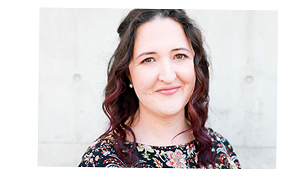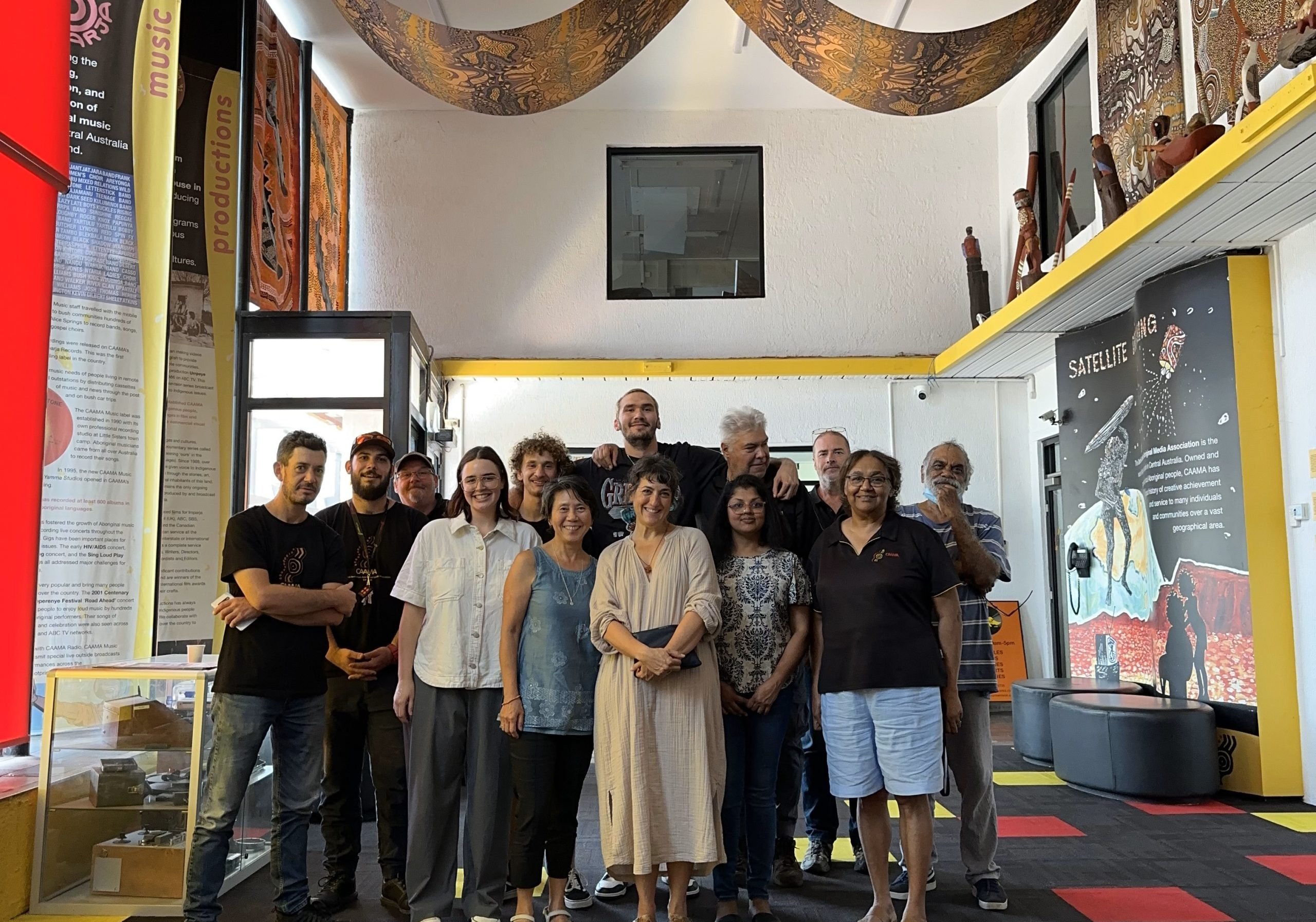This year Radioinfo goes across the country and networks to catch up with Managers and CEOs on the state of the industry, their role within it and where we are headed.
This time we head to the Northern Territory and meet Sonya De Masi who has been the CEO of the Central Australian Aboriginal Media Association (CAAMA) for a year. De Masi, a journalist and media development specialist, started with SBS and the ABC before taking her skills overseas working on social impact projects to achieve positive change in Burma, Ethiopia and South Sudan with the United Nations.
De Masi is pictured in the CAAMA foyer with most of the Mparntwe/Alice Springs team, third from the right in the front row.
Tell me about your background that led you to CAAMA?
My start was in community radio in Adelaide at Ethnic Broadcasters 5EBI and 5UV while I was at University. I was previously a journalist with SBS and the ABC. When I finished my Masters I got a role as a trainer with an international media development organisation called Internews. For the next decade I didn’t really stop, with all of my professional career focused on access to information and making radio for communities in their languages.
That is my specialised interest. Access to information for marginalised and disenfranchised communities and making content in their languages for whatever purpose, mostly for social and behaviour change. But also around those ideas of countries and democracies in fragile states, around conflict, humanitarian emergency, places and times of transition where people have critical needs for information.
My driving force is access to information in order to provide equality of access to services that give people a life of peace and dignity. It’s a refined skill set and so I was honoured to be invited to join CAAMA because, while I hadn’t worked for many years in the First Nations space, I felt like I had a commitment to prioritising the culture and languages and to bring them back to CAAMA.
What’s the best part of where you live and work?
I have a young child and part of the reason we are here is so that she will understand something of the First Nations experience in this country, and that she will know who are this country’s First Nations people in a different way to myself, because it took many years to have an Indigenous person as a colleague.
But it’s also a very beautiful part of Australia. How lucky are we to live here? It’s spectacular. The desert is stunning. Mparntwe/Alice Springs is an interesting and complicated place. It’s very diverse.
What has overseas experience given you towards connecting with Indigenous audiences?
I probably wouldn’t describe myself as mission driven, but I would certainly say that I have a set of values and beliefs that have informed the development of my professional career, the jobs I’ve accepted and places that I’ve gone to and found myself.
There’s a lot of complexity around a non-Indigenous person leading an Aboriginal organisation and I am completely aware of that, and I do my best to navigate that sensitively, to consult at all times, to be collaborative and to have in mind my succession.
With most of my work anywhere in the world, working alongside nationals of those countries, I was transferring skills, mentoring and supporting people into those roles. The ultimate goal of a lot of NGO work is to do yourself out of a job.
That’s a totally idealistic statement. In practice it is complicated. But Australia is a first world country. We should be able in this day and age to advance, prioritise, support, and then remove ourselves from places where First Nations voices should be.
Tell me about what CAAMA is doing?
We’re an FM station, 8KIN FM, with state-of-the-art automation software and all the infrastructure and studio equipment that you could absolutely dream of. We now have four fully equipped studios and the eight RIBS, Remote Indigenous Broadcasting Services, in communities. (8KIN is currently seeking a Broadcast and Content Manager)
We have a music studio. CAAMA Music was closed down before I took up my appointment and we are now in the process of reopening the studio to invite Indigenous bands back into the studio to perform and record.
CAAMA Music has such a rich history. We can broadcast live in the studio or go to community and broadcast bands.
We are also starting to talk to screen and film organisations to see what could happen.
What, as a media development specialist, does radio need to do to stay relevant?
Technology keeps changing. The equipment is different and the whole industry is different.
For me, the big thing is digital, and we have employed a marvelous Digital Lead. They have achieved exponential growth via establishing a TikTok channel. We had a viral post with respected Elder Carol Turner doing heads, shoulders, knees and toes in Arrernte.
It is so delightful, just a small post, but I think it shows that there is interest from all around the country in Aboriginal languages.
I would like to see us work in that direction much more. Not just formal language teaching but other things that could leverage our radio network in remote communities, working with schools, as well as our social platforms and website. If we can start building training around creative industries then CAAMA could once again be that very rich and fertile ground for emerging First Nations creatives.
Digital will amplify our other linear channels. And together they work in harmony to meet all different needs for all different purposes. It delivers me the possibility of having audio on demand and podcasts, which I can also use across all of my network, no matter where they are and then people can access it when it suits them, through a different platform and wherever they might be listening, including not even in Australia.
And what a great way to make connections with other First Nations communities in other countries.
What is a highlight so far?
Warren H. Williams recently came back to CAAMA. He’s a well-known country music artist and has been associated with CAAMA for a very long time. Knowing he was back that he was back and working with a young Arrernte woman on an audio project was exactly what I had hoped CAAMA could do, have young people working together with people of more experience and to come up with something completely new.
Some of the young folk that we’ve had come through on work experience really want to be here I believe CAAMA’s future lies in that. Of course, our legacy is critical. Everything that we do is with an acute awareness of where we’ve come from. But I’m also aware of where we’re going and when I see young people come into the radio station, because they really want to be here, I really want to make this a place where they can come and be.
Radioinfo’s Manager’s Special in a series that we will run throughout 2024. If you’d like to chat, or to nominate your GM or CEO, drop me a line.



What a fabulous article about a really remarkable woman - would that there were more people like Sonya who show up and bring their best selves and ideals! Thank you